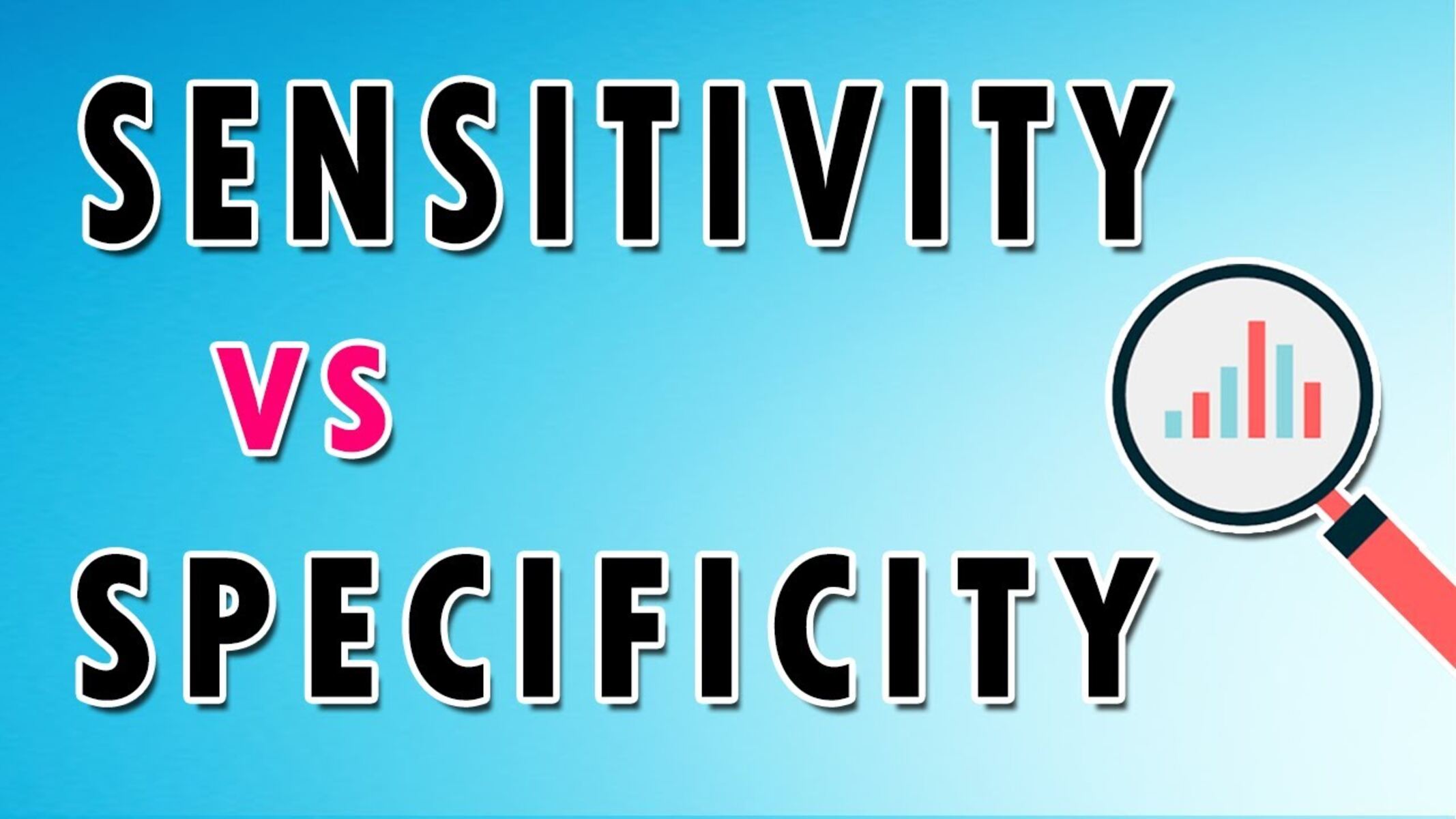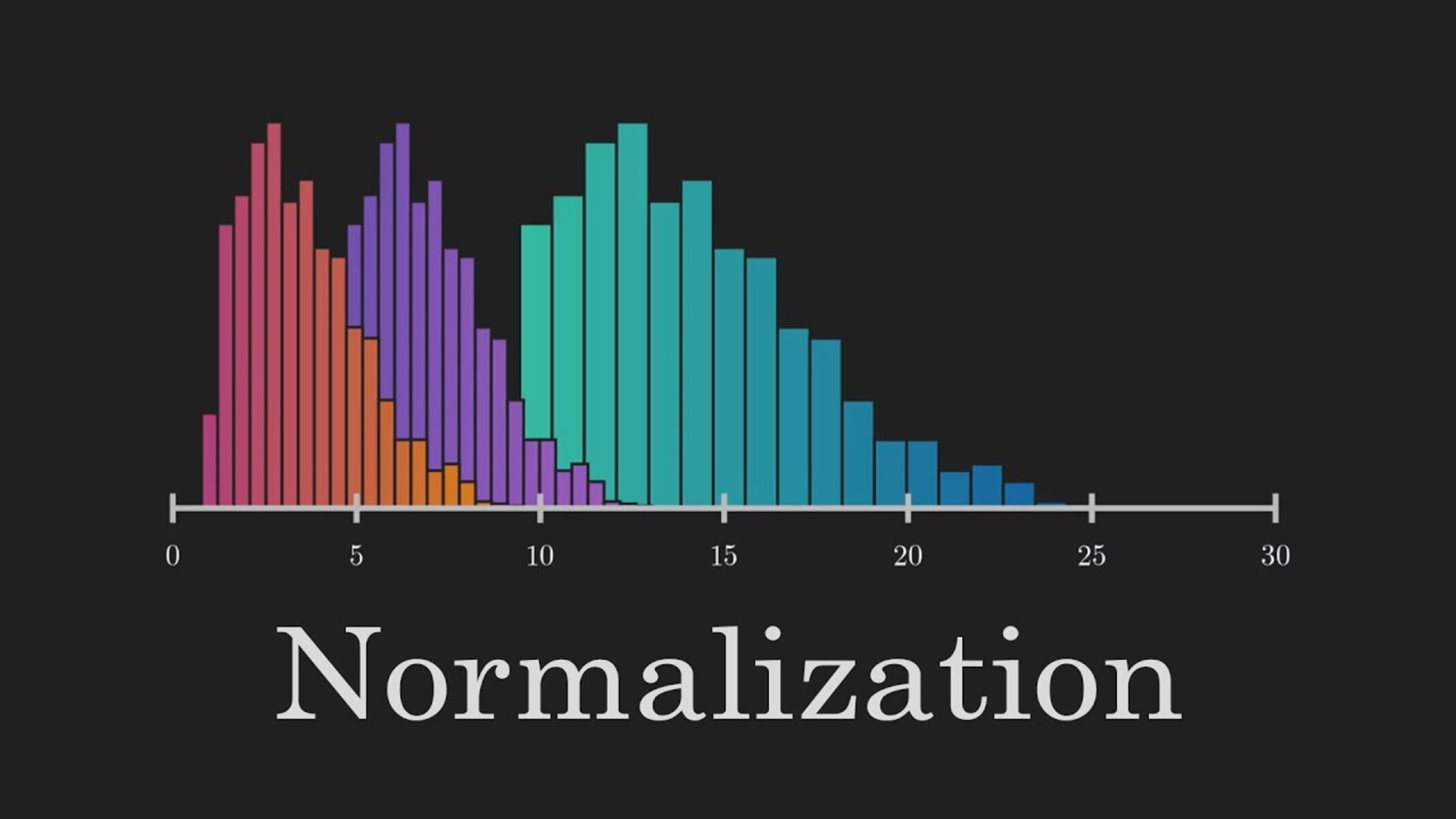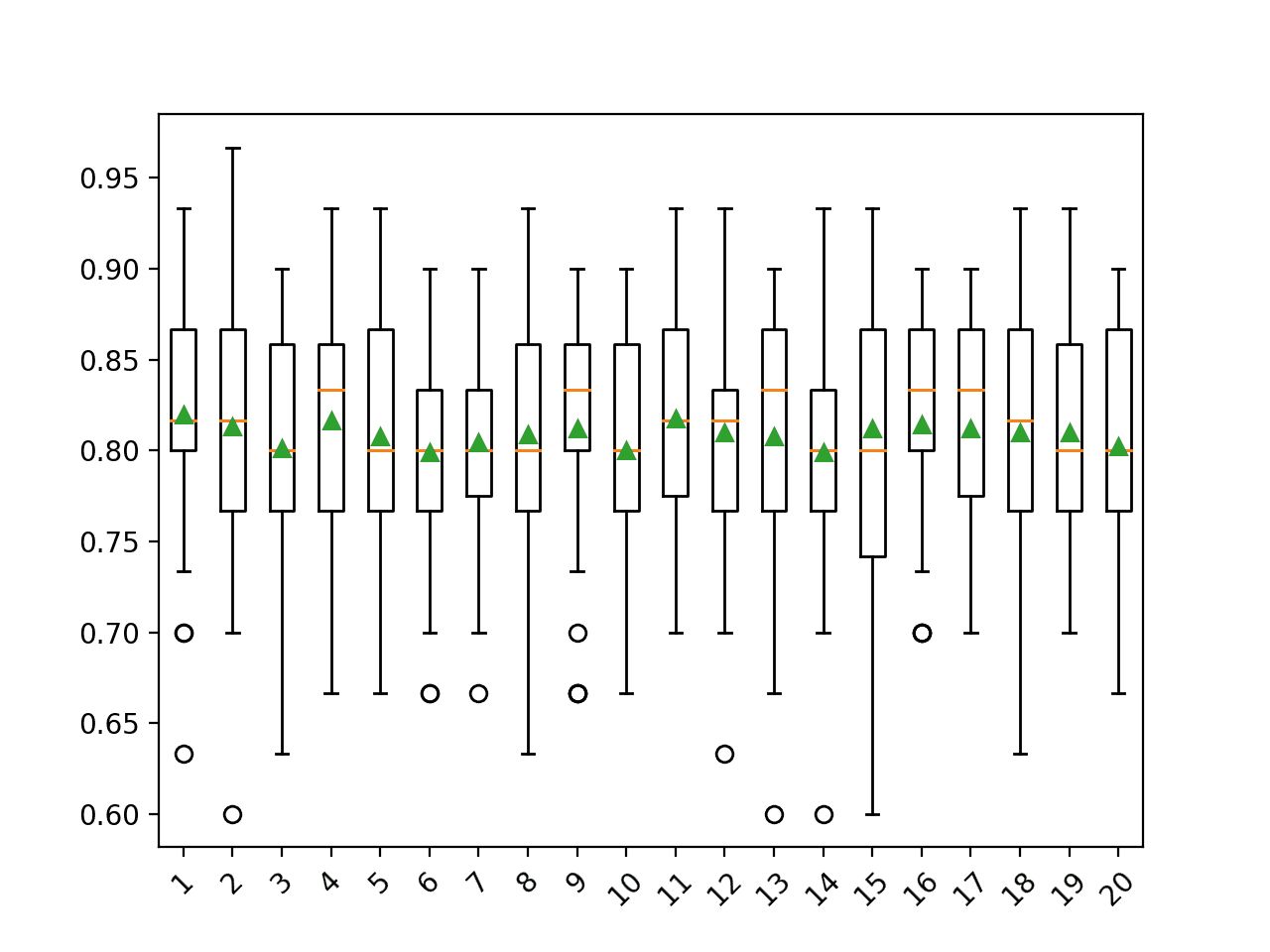Introduction
When it comes to machine learning and predictive modeling, it is crucial to understand the concepts of sensitivity and specificity. These two metrics play a significant role in determining the accuracy, reliability, and performance of a machine learning model. Both sensitivity and specificity provide valuable insights into the model’s ability to correctly classify data and make predictions.
Sensitivity, also known as the true positive rate or recall, measures the proportion of actual positive cases that the model correctly identifies. It indicates how well the model captures the positive instances within the dataset. On the other hand, specificity, also called the true negative rate, measures the proportion of actual negative cases that the model correctly identifies. It illustrates the model’s ability to correctly identify the absence of the target variable.
Understanding sensitivity and specificity is crucial in various domains of machine learning, including healthcare diagnostics, fraud detection, and quality control. These metrics help evaluate the model’s performance and identify its strengths and weaknesses.
Throughout this article, we will delve deeper into the definitions, calculations, and interpretations of sensitivity and specificity in machine learning. It is important to note that sensitivity and specificity are related metrics, and their interplay contributes to the overall effectiveness of a machine learning model.
So, let’s dive in and explore the world of sensitivity and specificity in the realm of machine learning and understand their significance in predictive modeling.
Definition of Sensitivity
Sensitivity, also referred to as the true positive rate or recall, is a statistical measurement that determines the proportion of actual positive cases correctly identified by a machine learning model. In other words, sensitivity quantifies the model’s ability to correctly detect the positive instances within a dataset.
To understand sensitivity, it is essential to grasp the concept of true positives (TP) and false negatives (FN). True positives represent the cases in which the model correctly classifies instances as positive. False negatives, on the other hand, occur when the model fails to identify positive cases correctly.
Sensitivity is calculated using the following formula:
Sensitivity = TP / (TP + FN)
The numerator, TP, represents the number of true positives, while the denominator, (TP + FN), represents the total number of actual positive cases in the dataset. By dividing the number of true positives by the sum of true positives and false negatives, we obtain the sensitivity value.
Sensitivity is often expressed as a percentage, ranging from 0% to 100%. A sensitivity value of 100% indicates that the model correctly identifies all actual positive cases, leaving no false negatives. Conversely, a sensitivity of 0% indicates that the model fails to detect any positive cases accurately.
Understanding sensitivity is crucial in various applications. For instance, in medical diagnosis, sensitivity measures the model’s ability to correctly identify individuals with a particular disease or condition. A high sensitivity value implies that the model can effectively identify the presence of the disease, reducing the chances of false negatives and potentially aiding in early intervention and treatment.
In summary, sensitivity is a fundamental metric in machine learning that quantifies the model’s ability to capture positive instances accurately. It plays a vital role in evaluating the model’s performance and its suitability for specific applications.
Importance of Sensitivity in Machine Learning
Sensitivity is a critical metric in machine learning as it reflects the model’s ability to correctly detect positive instances within a dataset. It is especially important in applications where identifying true positive cases is of utmost importance, such as medical diagnostics, fraud detection, or anomaly detection.
One of the key benefits of sensitivity is its ability to minimize false negatives. False negatives occur when the model fails to correctly identify positive cases, leading to missed opportunities or potential dangers. By maximizing sensitivity, machine learning models can minimize the chances of false negatives, ensuring that positive instances are accurately detected and classified.
In healthcare, sensitivity is particularly vital in diagnosing diseases or conditions. A high sensitivity value indicates that the model can effectively identify individuals with the condition, reducing the risk of false negatives. This can potentially facilitate early detection and treatment, leading to improved patient outcomes and prognosis.
Another application where sensitivity is crucial is fraud detection. When dealing with financial transactions or online activities, it is essential to accurately detect fraudulent behavior. A model with high sensitivity can effectively identify instances of fraud, minimizing the occurrence of false negatives where fraudulent activities go undetected. This helps protect consumers and businesses from potential financial losses.
Sensitivity also plays a significant role in anomaly detection and quality control. In these scenarios, the goal is to identify unusual or abnormal instances in a dataset. A high sensitivity value allows the model to capture the majority of these anomalies, ensuring that potential issues or deviations from normalcy are addressed promptly.
When developing machine learning models, it is crucial to consider the specific requirements of the application and the potential consequences of false negatives. In situations where missing positive instances can have severe consequences, such as in healthcare or security-related applications, prioritizing sensitivity becomes essential.
In summary, sensitivity is an important metric in machine learning as it measures the model’s ability to correctly identify positive cases. Its significance lies in minimizing false negatives, ensuring crucial instances are not missed. By considering sensitivity alongside other performance metrics, designers can create more accurate and reliable machine learning models for a variety of applications.
Calculation of Sensitivity
Calculating sensitivity, also known as the true positive rate or recall, involves measuring the proportion of actual positive cases correctly identified by a machine learning model. The formula for calculating sensitivity is relatively straightforward.
To calculate sensitivity, we need to determine the number of true positives (TP) and false negatives (FN) within the dataset. True positives represent the cases in which the model correctly classifies instances as positive, while false negatives occur when the model fails to identify positive cases accurately.
The formula for sensitivity is as follows:
Sensitivity = TP / (TP + FN)
Where:
- TP represents the number of true positive cases
- FN represents the number of false negative cases
To illustrate this calculation, let’s consider a medical diagnostic example. Suppose we have a dataset of 100 patients, of which 70 have a specific disease (positive cases) and 30 do not (negative cases). The machine learning model correctly detects 60 of the positive cases as true positives and misclassifies 10 positive cases as false negatives. In this scenario, the calculation of sensitivity would be:
Sensitivity = 60 / (60 + 10) = 0.857 or 85.7%
Thus, the sensitivity of the model is approximately 85.7%, indicating that it correctly identifies 85.7% of the positive cases within the dataset.
It is important to note that sensitivity can range from 0% to 100%. A sensitivity value of 100% means that the model correctly identifies all actual positive cases without any false negatives. Conversely, a sensitivity value of 0% indicates that the model fails to detect any positive cases accurately.
The calculation of sensitivity provides valuable insights into how well a machine learning model captures positive instances within a dataset. It is an essential metric to consider when evaluating the performance and effectiveness of a predictive model.
Interpretation of Sensitivity
Sensitivity, also known as the true positive rate or recall, provides valuable insights into a machine learning model’s ability to correctly detect positive cases within a dataset. Interpreting sensitivity results helps us understand the model’s performance and its suitability for specific applications.
A high sensitivity value indicates that the model effectively captures positive cases, minimizing the chances of false negatives. For example, if a medical diagnostic model has a sensitivity of 95%, it means that it correctly identifies 95% of patients with a particular disease, leaving only a small percentage of cases undetected. High sensitivity values are desired in applications where missing positive instances can have severe consequences, such as healthcare diagnostics or fraud detection.
On the other hand, a low sensitivity value implies that the model fails to identify a significant number of positive cases, leading to a higher rate of false negatives. For instance, a model with a sensitivity of 70% indicates that it misses 30% of actual positive cases, which can result in delayed diagnoses or missed opportunities. Low sensitivity values may be acceptable in certain situations where the cost of false positives is high, and minimizing false alarms is a priority.
When interpreting sensitivity values, it is essential to consider the specific context and requirements of the application. Different industries and domains may have varying thresholds for acceptable sensitivity levels depending on the consequences of false negatives and false positives.
Moreover, sensitivity values should not be evaluated in isolation. It is crucial to analyze them in conjunction with other performance metrics such as specificity, accuracy, or precision. These metrics provide a more comprehensive understanding of the model’s overall performance and effectiveness.
In summary, sensitivity is a valuable metric for assessing a machine learning model’s ability to correctly identify positive cases. A high sensitivity value suggests a strong ability to capture positive instances, while a low sensitivity value indicates a higher likelihood of missing positive cases. Interpreting sensitivity results in the context of the application’s requirements and in conjunction with other performance metrics helps determine the model’s efficacy and suitability.
Definition of Specificity
Specificity is a statistical metric that measures the proportion of actual negative cases correctly identified by a machine learning model. It assesses the model’s ability to correctly identify the absence of the target variable in a dataset.
To understand specificity, we need to grasp the concept of true negatives (TN) and false positives (FP). True negatives represent the cases in which the model correctly classifies instances as negative, while false positives occur when the model incorrectly identifies negative cases as positive.
The formula for calculating specificity is as follows:
Specificity = TN / (TN + FP)
Where:
- TN represents the number of true negative cases
- FP represents the number of false positive cases
The numerator, TN, represents the number of true negatives, while the denominator, (TN + FP), represents the total number of actual negative cases in the dataset. By dividing the number of true negatives by the sum of true negatives and false positives, we obtain the specificity value.
Specificity is often expressed as a percentage, ranging from 0% to 100%. A specificity value of 100% indicates that the model correctly identifies all actual negative cases, leaving no false positives. Conversely, a specificity value of 0% suggests that the model fails to identify any negative cases accurately.
Specificity is particularly valuable in scenarios where correctly identifying negative cases is critical. For example, in medical testing, specificity measures the model’s ability to correctly identify individuals without a particular disease or condition. A high specificity value implies that the model can effectively filter out individuals who are truly negative, reducing the chances of false positives and minimizing unnecessary interventions or treatments.
In summary, specificity is a fundamental metric in machine learning that measures the model’s ability to correctly identify negative cases. It plays a crucial role in evaluating the model’s performance and its suitability for specific applications where accurate identification of negative instances is essential.
Importance of Specificity in Machine Learning
Specificity is a vital metric in machine learning as it signifies the model’s ability to correctly identify negative cases within a dataset. While sensitivity focuses on capturing positive instances, specificity focuses on accurately detecting the absence of the target variable. Specificity plays a crucial role in various applications, including medical testing, quality control, and anomaly detection.
One of the primary benefits of specificity is its ability to minimize false positives. False positives occur when the model incorrectly identifies negative cases as positive. By maximizing specificity, machine learning models can reduce the occurrence of false positives, ensuring that negative instances are correctly classified and minimizing unnecessary actions or interventions.
In medical testing, specificity holds significant importance. It measures the model’s ability to correctly identify individuals without a particular disease or condition. A high specificity value indicates that the model can effectively filter out individuals who are truly negative, reducing the chances of false positives. This helps prevent unnecessary medical treatments or interventions, saving both the patients and the healthcare system valuable resources.
Specificity also plays a crucial role in quality control processes, where the goal is to identify normal or typical instances. For example, in manufacturing, specificity measures the model’s ability to detect products that meet the desired specifications, ensuring that faulty or substandard items are identified and removed from the production line. This leads to improved quality and customer satisfaction.
Another application where specificity is vital is in anomaly detection. By accurately identifying negative instances within a dataset, machine learning models can effectively uncover unusual or abnormal cases that deviate from the norm. This is particularly valuable in various domains, including cybersecurity, fraud detection, and network monitoring.
When developing machine learning models, it is essential to strike a balance between sensitivity and specificity. While high sensitivity captures positive instances effectively, high specificity ensures accurate detection of negative instances. The ideal model should achieve a balance between the two, depending on the specific requirements and consequences of false positives and false negatives for the application at hand.
In summary, specificity is an important metric in machine learning that measures the model’s ability to correctly identify negative cases. It plays a crucial role in various applications, including medical testing, quality control, and anomaly detection. Maximizing specificity helps minimize false positives, leading to improved accuracy and efficiency in classification tasks.
Calculation of Specificity
The calculation of specificity, also known as the true negative rate, involves quantifying the proportion of actual negative cases correctly identified by a machine learning model. The formula for calculating specificity is relatively straightforward and requires determining the number of true negatives (TN) and false positives (FP) within the dataset.
The formula for specificity is as follows:
Specificity = TN / (TN + FP)
Specificity is calculated by dividing the number of true negatives (TN) by the sum of true negatives and false positives (TN + FP). True negatives represent the cases in which the model correctly classifies instances as negative, while false positives occur when the model incorrectly identifies negative cases as positive.
It is important to note that true negatives are cases where the actual value is negative, and the model correctly predicts it as negative. False positives, on the other hand, are cases where the actual value is negative, but the model mistakenly predicts it as positive.
After obtaining the numerator and the denominator, we can calculate specificity. The value of specificity ranges from 0% to 100%. A specificity value of 100% indicates that the model correctly identifies all actual negative cases without any false positives. Conversely, a specificity value of 0% suggests that the model fails to identify any negative cases accurately.
Let’s consider an example to illustrate specificity calculation. Suppose we have a dataset of 200 individuals, of which 150 do not have a specific condition (negative cases) and 50 have the condition (positive cases). The machine learning model correctly classifies 130 of the negatives as true negatives and misclassifies 20 negative cases as false positives. In this scenario, the calculation of specificity would be:
Specificity = 130 / (130 + 20) = 0.866 or 86.6%
Thus, the specificity of the model is approximately 86.6%, indicating that it correctly identifies 86.6% of the negative cases within the dataset.
The calculation of specificity provides insight into how well a machine learning model captures negative instances within a dataset. It is a crucial metric for evaluating the model’s performance and its suitability for specific applications.
Interpretation of Specificity
Specificity, also known as the true negative rate, is an important metric in machine learning that measures the model’s ability to correctly identify negative cases within a dataset. Interpreting specificity results helps us understand the model’s performance and its suitability for specific applications where accurate detection of negative instances is crucial.
A high specificity value indicates that the model effectively captures negative cases, minimizing the chances of false positives. For example, in medical testing, a high specificity value means that the model can correctly identify individuals without a particular disease or condition, reducing unnecessary interventions or treatments. High specificity values are desired in applications where false positives can lead to significant consequences or unnecessary actions.
On the other hand, a low specificity value suggests that the model misclassifies a significant number of negative cases as positive, resulting in a higher rate of false positives. For instance, a model with low specificity in medical testing may mistakenly classify healthy individuals as diseased, leading to unnecessary stress and potentially harmful treatments. In such situations, it is important to improve specificity to reduce the occurrence of false positives and ensure accurate identification of negative instances.
When interpreting specificity values, it is crucial to consider the specific context and requirements of the application. Different industries and domains may have varying thresholds for acceptable specificity levels depending on the consequences of false positives and false negatives. For example, in security-related applications, it may be critical to have high specificity to minimize the occurrence of false alarms and ensure accurate identification of threats.
Moreover, specificity should not be evaluated in isolation. It is important to analyze it in conjunction with other performance metrics such as sensitivity, accuracy, or precision. These metrics provide a more comprehensive understanding of the model’s overall performance and effectiveness.
In summary, specificity is a key metric for evaluating a machine learning model’s ability to correctly identify negative cases. A high specificity value indicates accurate detection of negative instances, while a low value suggests a higher likelihood of false positives. Interpreting specificity results in the context of the application’s requirements and in conjunction with other performance metrics helps determine the model’s efficacy and suitability.
The Relationship Between Sensitivity and Specificity
The relationship between sensitivity and specificity is crucial in evaluating the performance and effectiveness of a machine learning model. These two metrics often work in tandem to provide a comprehensive understanding of the model’s ability to correctly classify instances.
While sensitivity measures the model’s ability to capture positive cases accurately, specificity focuses on the model’s ability to identify negative cases correctly. In many cases, there is a trade-off between sensitivity and specificity. Increasing one of these metrics often leads to a decrease in the other.
For instance, if a model aims to maximize sensitivity, it may adopt a less stringent classification threshold, leading to a higher likelihood of classifying instances as positive. However, this more inclusive approach may also result in more false positives, negatively impacting specificity. On the other hand, if the focus is on maximizing specificity, a more conservative approach may be adopted, resulting in fewer false positives but potentially sacrificing sensitivity.
Understanding the relationship between sensitivity and specificity is vital to strike an appropriate balance for the given application. The specific requirements and consequences of false positives and false negatives should be carefully considered to determine the optimal operating point.
An important concept that showcases the relationship between sensitivity and specificity is the receiver operating characteristic (ROC) curve. The ROC curve illustrates the performance of a machine learning model across various classification thresholds. It plots the true positive rate (sensitivity) against the false positive rate (1 – specificity) for different threshold settings.
The ROC curve provides insights into the model’s ability to discriminate between positive and negative cases across the entire range of possible classification thresholds. The curve’s shape and the area under the curve (AUC) are indicative of the model’s overall performance. A model with a higher AUC implies a better balance between sensitivity and specificity.
In some cases, it may be necessary to prioritize sensitivity or specificity over the other, depending on the application’s specific requirements. For instance, in medical diagnostic systems where the potential harm of false negatives is high, sensitivity may be prioritized over specificity. Conversely, in applications where false positives have significant consequences, specificity may be prioritized over sensitivity.
By analyzing the relationship between sensitivity and specificity and considering the specific context and requirements of the application, a more informed decision can be made regarding the optimal trade-off between the two metrics.
In summary, sensitivity and specificity are complementary metrics that provide valuable insights into the model’s classification performance. Understanding their relationship facilitates the selection of an appropriate operating point, considering the specific requirements and consequences of false positives and false negatives for the given application.
Conclusion
Sensitivity and specificity are essential metrics in machine learning that play a significant role in evaluating and understanding a model’s performance. Sensitivity measures the model’s ability to capture positive cases accurately, while specificity focuses on its ability to identify negative cases correctly.
Both sensitivity and specificity provide valuable insights into the model’s strengths and weaknesses. They help determine the model’s suitability for specific applications where the consequences of false positives or false negatives are crucial.
Understanding the relationship between sensitivity and specificity is key. These metrics often work in tandem, and a trade-off exists between them. Increasing sensitivity may result in a decrease in specificity, and vice versa. Achieving the optimal balance depends on the specific requirements and context of the application.
Interpreting sensitivity and specificity results, along with other performance metrics, provides a comprehensive understanding of the model’s overall performance. The interpretation helps developers make informed decisions about adjustments, improvements, or further optimizations to enhance the model’s effectiveness.
To effectively leverage sensitivity and specificity, it is important to consider the specific domain or industry requirements. Different applications may prioritize one metric over the other based on the potential consequences of false positives or false negatives.
In summary, sensitivity and specificity are fundamental metrics in machine learning that allow for a thorough evaluation of the model’s performance and its suitability for specific applications. By understanding their definitions, calculations, interpretations, and the relationship between the two, developers can build more robust and efficient machine learning models.

























